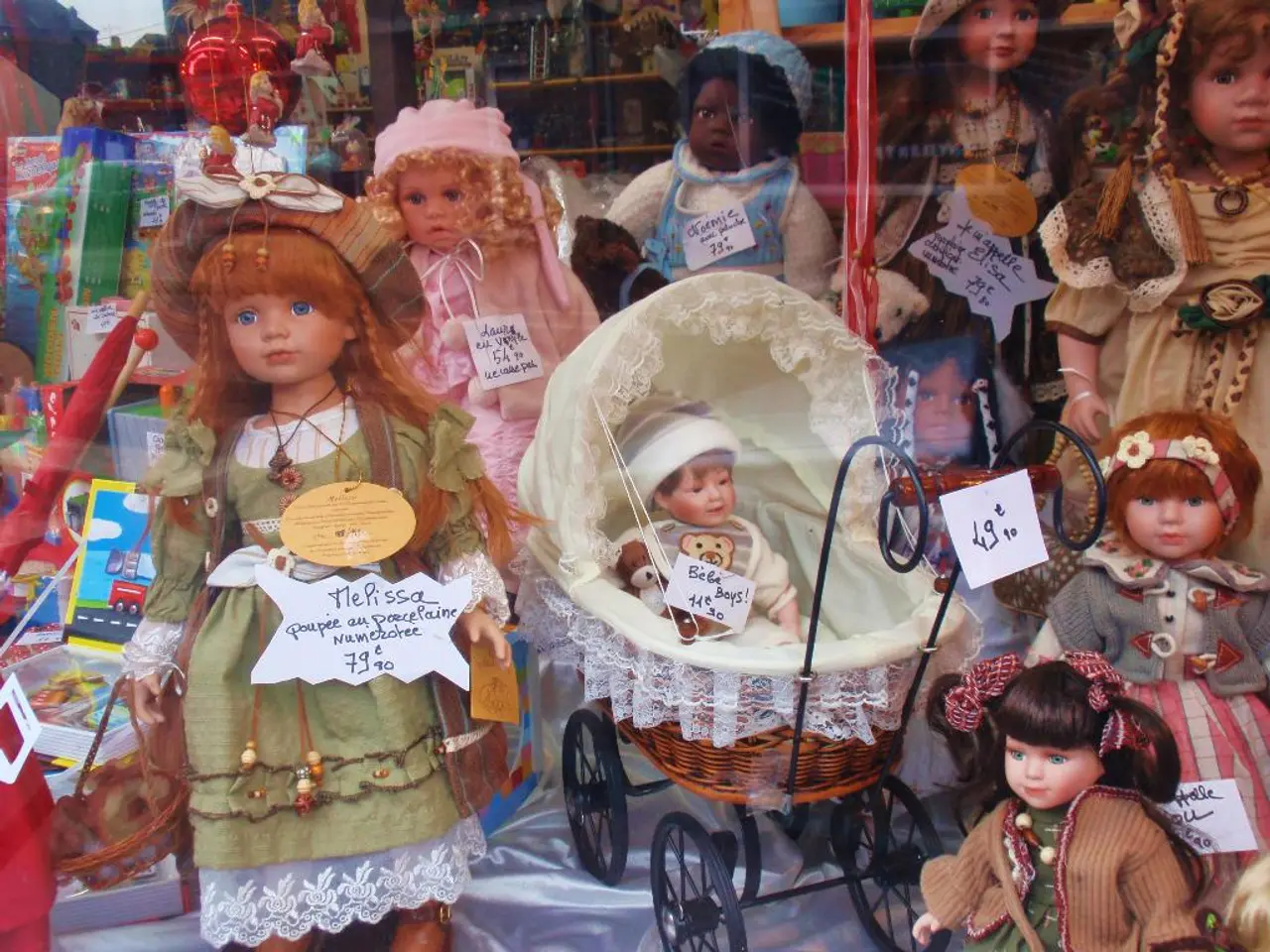Mattel Introduces a New Barbie Doll with Diabetes Type 1 Condition
In a groundbreaking move, Mattel, the renowned toy manufacturer, has introduced a new Barbie doll that represents a child living with Type 1 diabetes (T1D). This addition to the Barbie Fashionistas line is a significant step towards inclusivity and accurate representation in the toy industry.
The development of this doll was a collaborative effort between Mattel and Breakthrough T1D, a leading global organisation dedicated to Type 1 diabetes research and advocacy. The doll's design was informed by the T1D community, ensuring that it accurately reflects the lived experiences of children with T1D.
The new Barbie doll comes equipped with a continuous glucose monitor (CGM) and an insulin pump, replicating the essential tools used by children with T1D in their daily lives. The doll's outfit includes a blue polka-dot top and skirt, a symbol of diabetes awareness. Her accessories also include a phone displaying a CGM app to track blood sugar levels, further emphasising the doll's medical accuracy.
The unveiling of this doll took place at Breakthrough T1D's 2025 Children’s Congress in Washington, D.C., where it was met with enthusiasm from the T1D community. The doll's introduction is a significant milestone in promoting inclusivity and visibility for children with chronic conditions.
The response from the T1D community has been overwhelmingly positive. Many have expressed gratitude for the doll's ability to represent children with T1D, seeing it as a powerful tool for educating others about the condition and promoting acceptance.
This doll sets a precedent for other toy manufacturers to prioritise inclusivity and representation. By incorporating diverse experiences into mainstream toys, companies can help normalise conditions like T1D and encourage empathy and understanding among children.
The Barbie Fashionistas line, which includes dolls with various skin tones, body types, and disabilities, has been a success since its inception. The wheelchair-using doll, introduced in 2019, has consistently been a top performer. The introduction of the T1D Barbie further expands this line's diversity, making it more inclusive and representative.
In conclusion, the Barbie doll with Type 1 diabetes is a significant step forward in the representation of children with chronic conditions in the toy industry. It promotes inclusivity and visibility while offering children with T1D a doll that accurately reflects their experiences. This move encourages children to embrace their differences and fosters a sense of belonging among those living with chronic conditions.
- Mattel's new Barbie doll, representing a child with Type 1 diabetes, marks a significant shift in the business of entertainment towards inclusivity and accuracy representation in toys, particularly in Los Angeles, California.
- The development of this doll was a collaborative effort with Breakthrough T1D, a leading global organization in Type 1 diabetes research and advocacy, supporting the ontology of health and wellness.
- The doll, part of the Barbie Fashionistas line, comes with a continuous glucose monitor and insulin pump, embodying the realities of managing chronic diseases like Type 1 diabetes in daily life.
- The Lakers city can expect this new addition to be a positive influence in fostering mental health and understanding for children regarding medical conditions, including Type 2 diabetes and other chronic diseases.
- Further, the new Barbie doll, dressed in a blue polka-dot top and skirt, symbolizing diabetes awareness, encourages companies across the entertainment industry to prioritize fitness and exercise, nutrition, and diverse experiences in their products.
- The introduction of the T1D Barbie assists in furthering the aspirations of promoting science and undeniably will impact the perceptions and attitudes of future generations in Los Angeles, California, and beyond.




